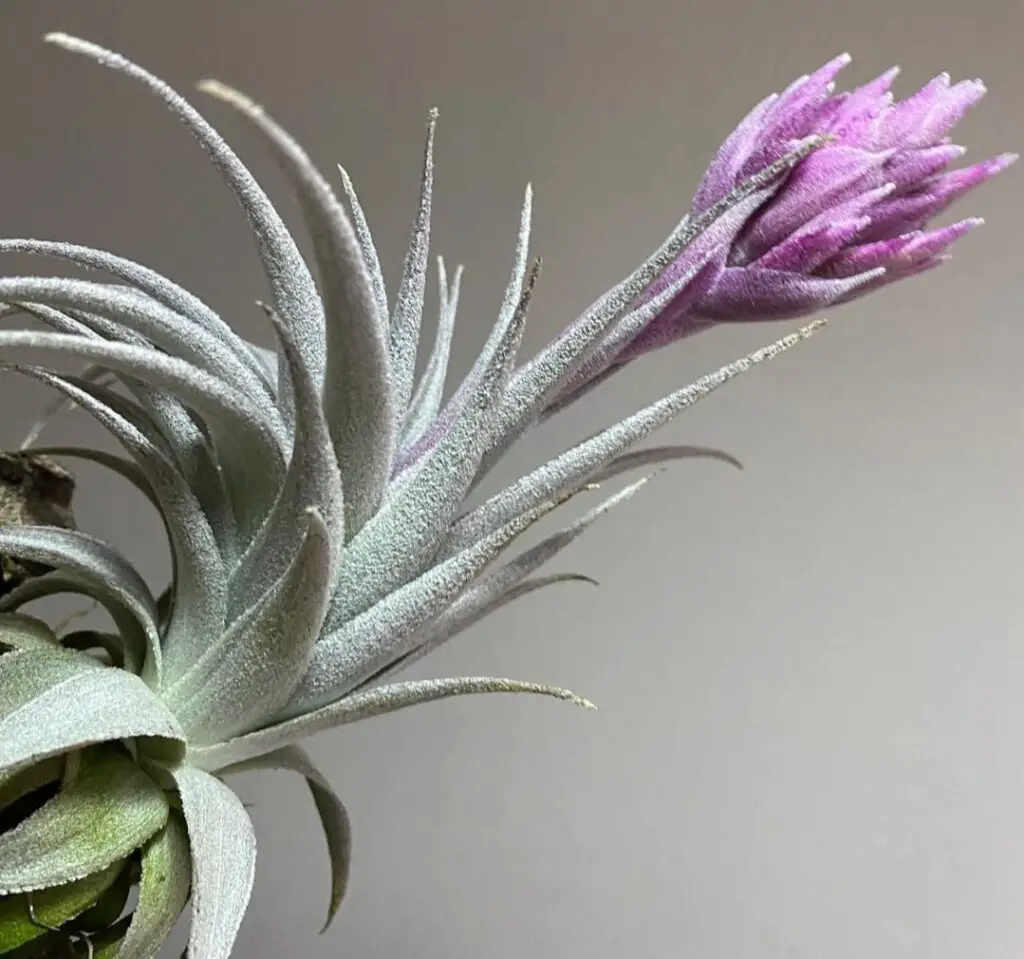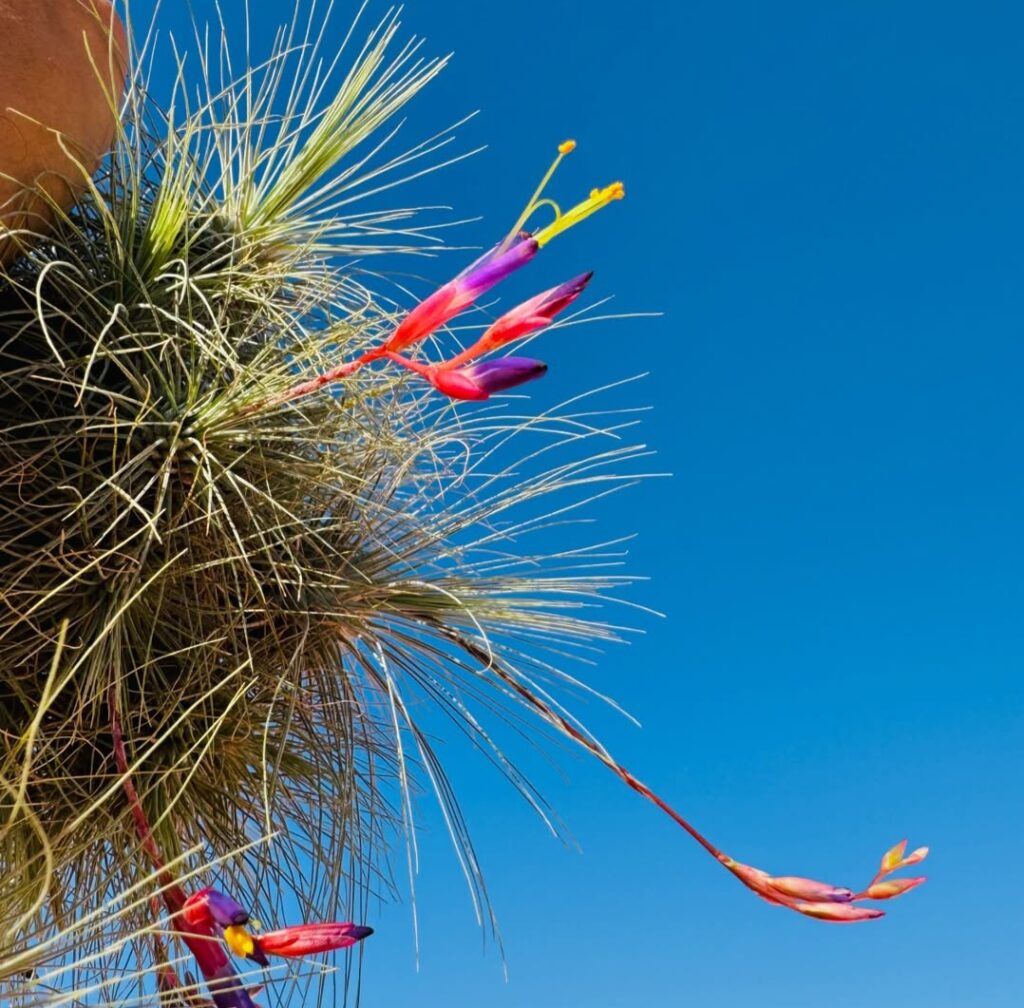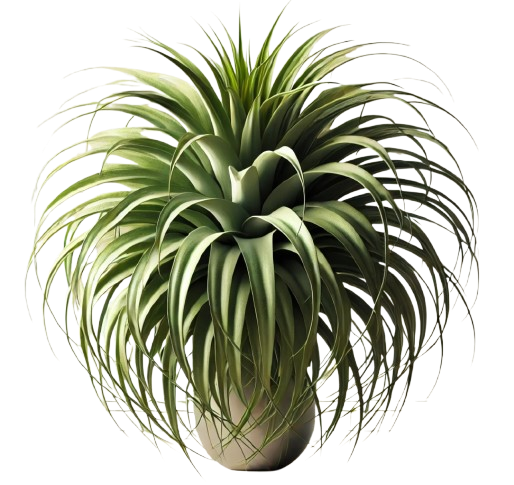Tillandsia gardneri is a graceful and elegant air plant known for its velvety, silvery-green leaves that form a symmetrical rosette. The smooth texture and pastel-toned flower spikes of this species, which is native to the mountainous regions of Venezuela, Brazil, and Colombia, make it a favourite among Tillandsia collectors. Despite its exotic appearance, Tillandsia gardneri is surprisingly easy to care for once you understand its unique needs. In this post, we’ll share 20 expert-approved tips to help you grow and maintain a healthy, thriving Tillandsia gardneri in your indoor or outdoor plant collection.
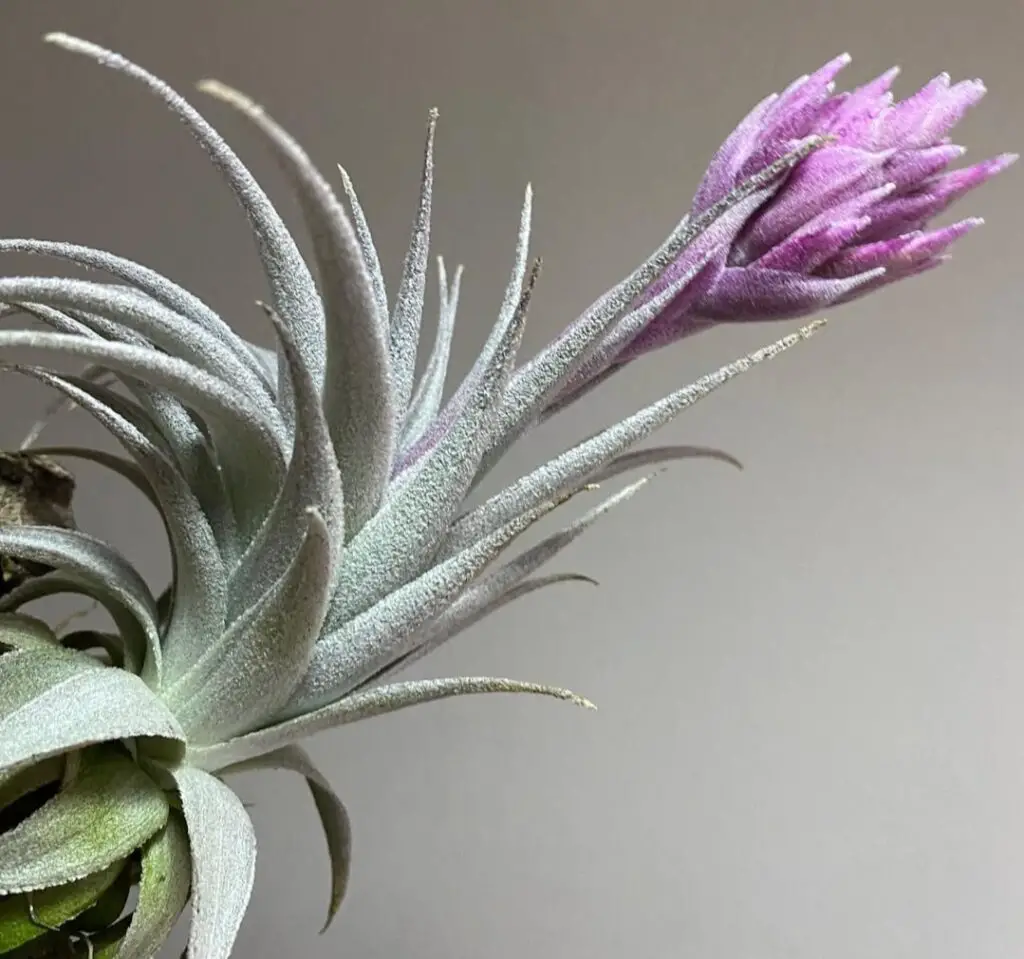
- 1 🌿 1. Know the Species Before You Grow
- 2 ☀️ 2. Bright but Gentle Light Is Ideal
- 3 💧 3. Watering Should Be Regular but Balanced
- 4 🌀 4. Ensure Proper Drying After Watering
- 5 🧴 5. Use Rainwater or Filtered Water
- 6 🌬️ 6. Good Airflow Is Non-Negotiable
- 7 💨 7. Maintain Moderate Humidity
- 8 🌡️ 8. Moderate Temperatures Work Best
- 9 🌱 9. Mount It Naturally for Better Growth
- 10 🌸 10. Understand Its Blooming Cycle
- 11 🧼 11. Keep the Plant Clean and Dust-Free
- 12 ✂️ 12. Trim Dead Leaves and Brown Tips
- 13 🧃 13. Fertilise Sparingly but Consistently
- 14 ⚠️ 14. Avoid Over-Fertilisation
- 15 🐜 15. Monitor for Pests or Mould
- 16 🪟 16. Rotate for Balanced Light Exposure
- 17 🌼 17. Encourage Pup Growth After Blooming
- 18 📦 18. Display with Creativity, But Avoid Glass Enclosures
- 19 🧘 19. Stay Consistent With Routine Care
- 20 💚 20. Be Patient and Observant
- 21 🌟 Conclusion: A Soft, Sculptural Air Plant You’ll Love
- 22 FAQs: Tillandsia Gardneri Care
🌿 1. Know the Species Before You Grow
Tillandsia gardneri is an epiphytic air plant, which means it naturally grows without soil by attaching itself to tree bark or rocks. Its soft, flexible leaves are covered in fine trichomes that help absorb moisture and nutrients from the air. It is ideal for indoor growing since, in contrast to other air plants, it prefers lower temperatures and less direct sunshine.
☀️ 2. Bright but Gentle Light Is Ideal
This species thrives in bright, indirect light. Direct sun, especially harsh afternoon rays, can scorch its soft leaves. A spot near a bright window with filtered light or morning sun is ideal. If growing outdoors, place it under a shade cloth or on a porch where it gets gentle light without burning.
💧 3. Watering Should Be Regular but Balanced
Water Tillandsia gardneri about 2–3 times a week, depending on your local climate and humidity. After soaking the plant in room-temperature water for 15 to 20 minutes, allow it to air dry. If the plant feels soft or the leaf tips begin to curl, that’s a sign it needs more water.
🌀 4. Ensure Proper Drying After Watering
After watering, place the plant upside down or tilted to prevent water from pooling in the centre, which can lead to rot. Drying time should be under 4 hours in a well-ventilated space. Never let the plant sit in water or stay damp for too long.
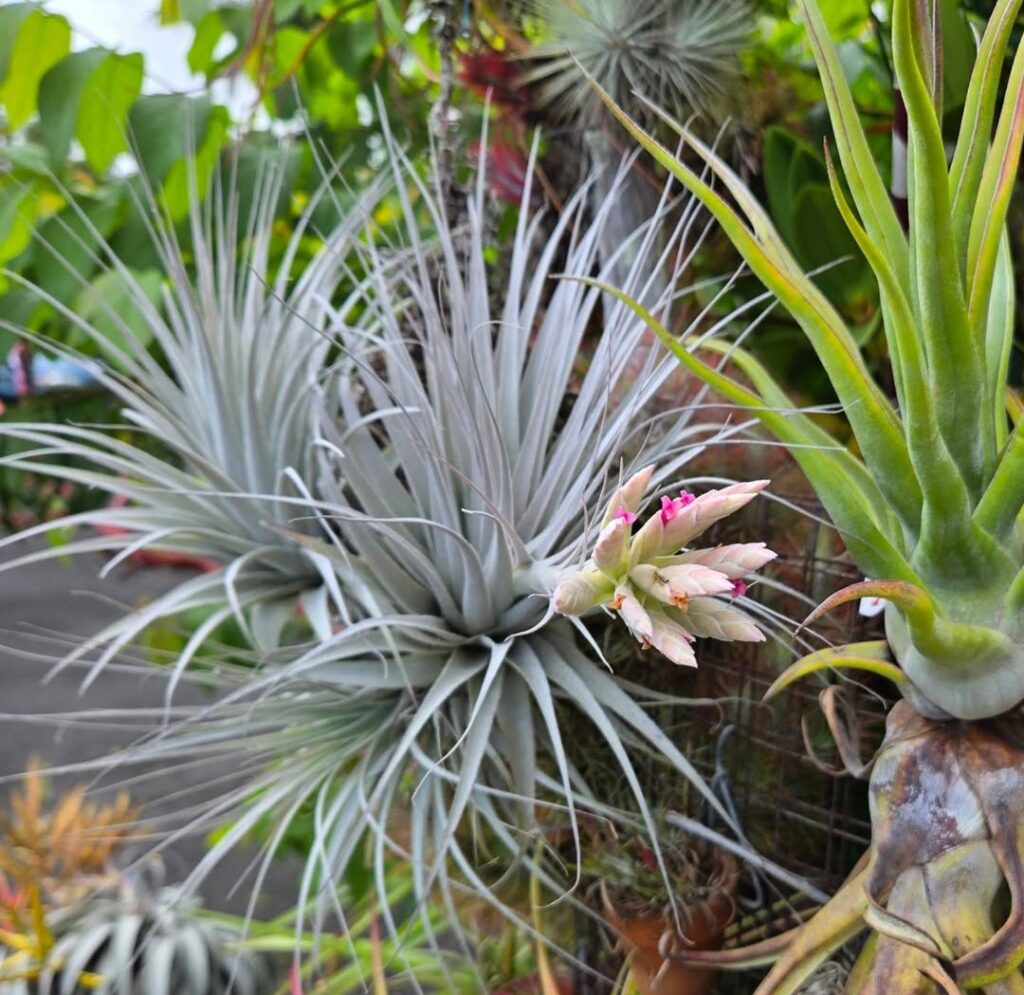
🧴 5. Use Rainwater or Filtered Water
Tap water may contain chlorine, fluoride, or minerals that can harm Tillandsia gardneri over time. Instead, use rainwater, filtered water, or spring water for soaking or misting. This small step greatly increases the plant’s longevity and overall health.
🌬️ 6. Good Airflow Is Non-Negotiable
Air circulation is just as important as light and water. Place your Tillandsia in an open environment where air moves freely—on a windowsill, shelf, or open terrarium. Avoid closed jars or containers that restrict airflow.
💨 7. Maintain Moderate Humidity
Tillandsia gardneri enjoys humidity levels between 50% and 70%. If you live in a dry climate or use air conditioning or heaters indoors, consider misting the plant lightly in between waterings or placing a humidifier nearby to mimic its natural environment.
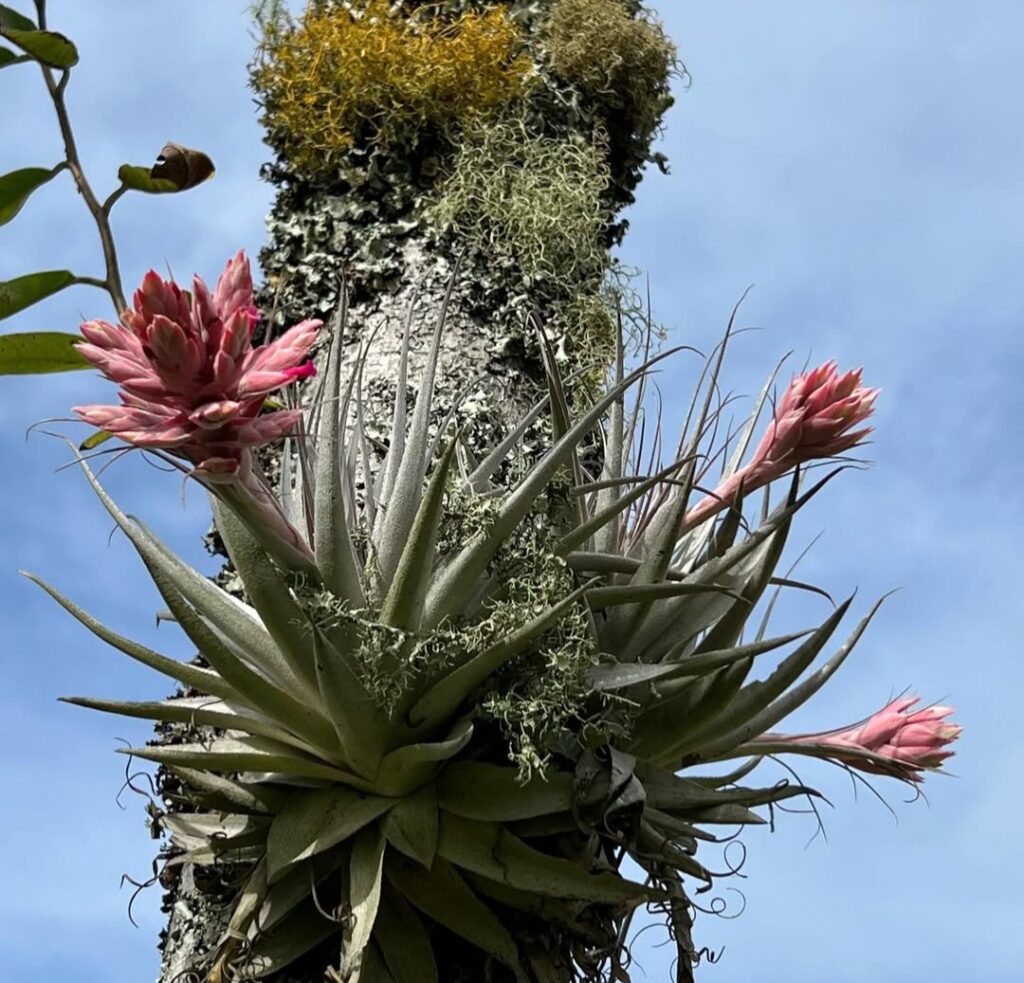
🌡️ 8. Moderate Temperatures Work Best
Ideal temperatures for Tillandsia gardneri range between 50°F and 80°F (10°C and 27°C). It doesn’t tolerate frost, so if you’re growing it outdoors in cooler climates, be sure to bring it inside during cold months or protect it with a greenhouse or cover.
🌱 9. Mount It Naturally for Better Growth
Mounting Tillandsia gardneri on cork bark, driftwood, or other natural materials replicates its native environment and promotes healthier growth. Use non-toxic glue or soft wire, and ensure it has room to expand as it grows.
🌸 10. Understand Its Blooming Cycle
Tillandsia gardneri produces pale pink or lavender flower spikes that last for several weeks. This usually occurs once in the plant’s life, after which it will begin producing offsets or “pups”. Encourage blooming with consistent care, bright light, and occasional fertilising.
🧼 11. Keep the Plant Clean and Dust-Free
Dust buildup can block the plant’s trichomes from absorbing air and moisture. Rinse the plant gently every few weeks or use a soft brush to remove debris from the leaves, especially if it’s placed indoors near windows or on shelves.
✂️ 12. Trim Dead Leaves and Brown Tips
As the plant ages, lower leaves may naturally dry out. Use clean, sharp scissors to trim away brown or dry tips. Always cut carefully to avoid damaging the healthy parts of the leaf or disturbing the central rosette.
🧃 13. Fertilise Sparingly but Consistently
Feed your Tillandsia gardneri with a bromeliad or air plant fertiliser diluted to ¼ strength once a month. Apply during watering to help it absorb nutrients easily. Fertilising encourages blooming, stronger foliage, and the development of pups.
⚠️ 14. Avoid Over-Fertilisation
While monthly feeding is beneficial, too much fertiliser can lead to leaf burn or disrupted growth. Never fertilise more than once every 3–4 weeks, and always dilute the formula properly.
🐜 15. Monitor for Pests or Mould
Despite its relative resistance to pests, Tillandsia gardneri may occasionally attract mealybugs or develop fungal problems if it is kept in an excessively moist environment. Use diluted neem oil or isopropyl alcohol on a cotton swab to treat issues early and conduct routine inspections.
🪟 16. Rotate for Balanced Light Exposure
To keep the plant growing evenly, rotate it once a week if it’s placed near a window. This helps prevent lopsided growth and ensures all sides get equal light exposure.
🌼 17. Encourage Pup Growth After Blooming
Once your plant blooms, it will gradually begin producing pups at the base. Allow these pups to grow until they reach at least one-third the size of the parent plant before separating. You can remount or group them together to create a larger display.
📦 18. Display with Creativity, But Avoid Glass Enclosures
Tillandsia gardneri looks beautiful in hanging baskets, mounted on driftwood, or displayed in open-air terrariums. Avoid sealing it in glass domes or jars, as this restricts airflow and raises humidity too much, risking rot.
🧘 19. Stay Consistent With Routine Care
Air plants are not forgiving of sudden changes. Stick to a consistent watering schedule, provide steady light, and avoid switching placement too often. Regular routines help the plant stay strong and adapt better over time.
💚 20. Be Patient and Observant
Every Tillandsia is unique, and Tillandsia gardneri may take time to bloom or pup depending on its environment. Be observant—watch how it responds to changes in light, humidity, or care—and adjust gently. Over time, your patience will be rewarded with healthy growth and even baby plants.
🌟 Conclusion: A Soft, Sculptural Air Plant You’ll Love
Tillandsia gardneri combines softness and structure in one plant. Its gentle colouring and elegant form make it a standout in any plant lover’s collection. With the right care—moderate light, regular watering, proper air circulation, and a touch of patience—this beautiful air plant will thrive for years to come. Whether you display it in your living room, patio, or bathroom, it brings a touch of exotic nature indoors.
FAQs: Tillandsia Gardneri Care
How often should I water Tillandsia Gardneri?
Water Tillandsia Gardneri 2–3 times a week, depending on your climate. In dry or hot conditions, you may need to mist or soak it more often.
What temperature is best for Tillandsia Gardneri?
Keep it in temperatures between 15°C to 30°C (59°F to 86°F). Protect it from frost or freezing temperatures.
Should I use fertilizer for Tillandsia Gardneri ?
Yes, use a diluted bromeliad or air plant fertilizer once a month during the growing season for healthy growth and better blooming.
How do I know if my Tillandsia Gardneri is getting too much or too little water?
Too much water: Leaves become soft, dark, and may rot.Too little water: Leaves curl, feel dry or crispy, and lose their vibrant color.
Can Tillandsia Gardneri grow indoors?
Absolutely! As long as it receives good air circulation and bright, filtered light, it can thrive indoors.
How do I encourage Tillandsia Gardneri to bloom?
Consistent care with proper light, water, and a monthly feeding can trigger blooming. Most Tillandsias bloom once in their life and produce pups afterward.
